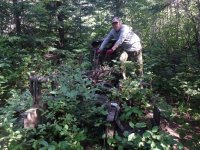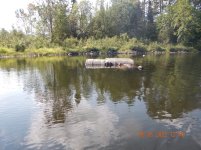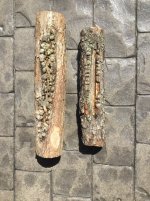The shoreline of the Hayes River at York Factory is full of artifacts. The rapidly eroding bank has claimed many of the buildings and the HBC rebuilt its main building 3 times at this spot. Every time the tide goes out new stuff washes up, grape shot, nails, pipes, coins are everywhere. Parks Canada can’t be bothered to monitor it and apparently is done cataloging all of the artifacts at the site. It’s an artifact hunters dream walking its shoreline. Wish my kids were there for that one, they’d have had a blast.
-
Happy 1st Performance of Handel's "Messiah" (1742)! 🎹🎺🆂🅳🅶
You are using an out of date browser. It may not display this or other websites correctly.
You should upgrade or use an alternative browser.
You should upgrade or use an alternative browser.
Finds, Relics, and Evidence from The Past
- Thread starter Odyssey
- Start date
in the US, 50 or more years old would be an artifact
In that case, there's always been an artifact in my canoe for decades.
After seeing everyone's contributions, I realized I do have some pics...
Here's some remnant of mechanized dunnowhat, left behind near whats left of the human bolstered dam on Clockmill Pond (ADK's). If anyone is curious, check it out on satellite images, it's got a very interesting shoreline.
For scale, the four sprig? post is about 8" in diameter.

Here's what's left of some sort of runabout, slowly dissolving in Jabe Pond.


Here's a little boiler, remnants of a graphite mining operation at Rock Pond (near Putnam, ADK's)
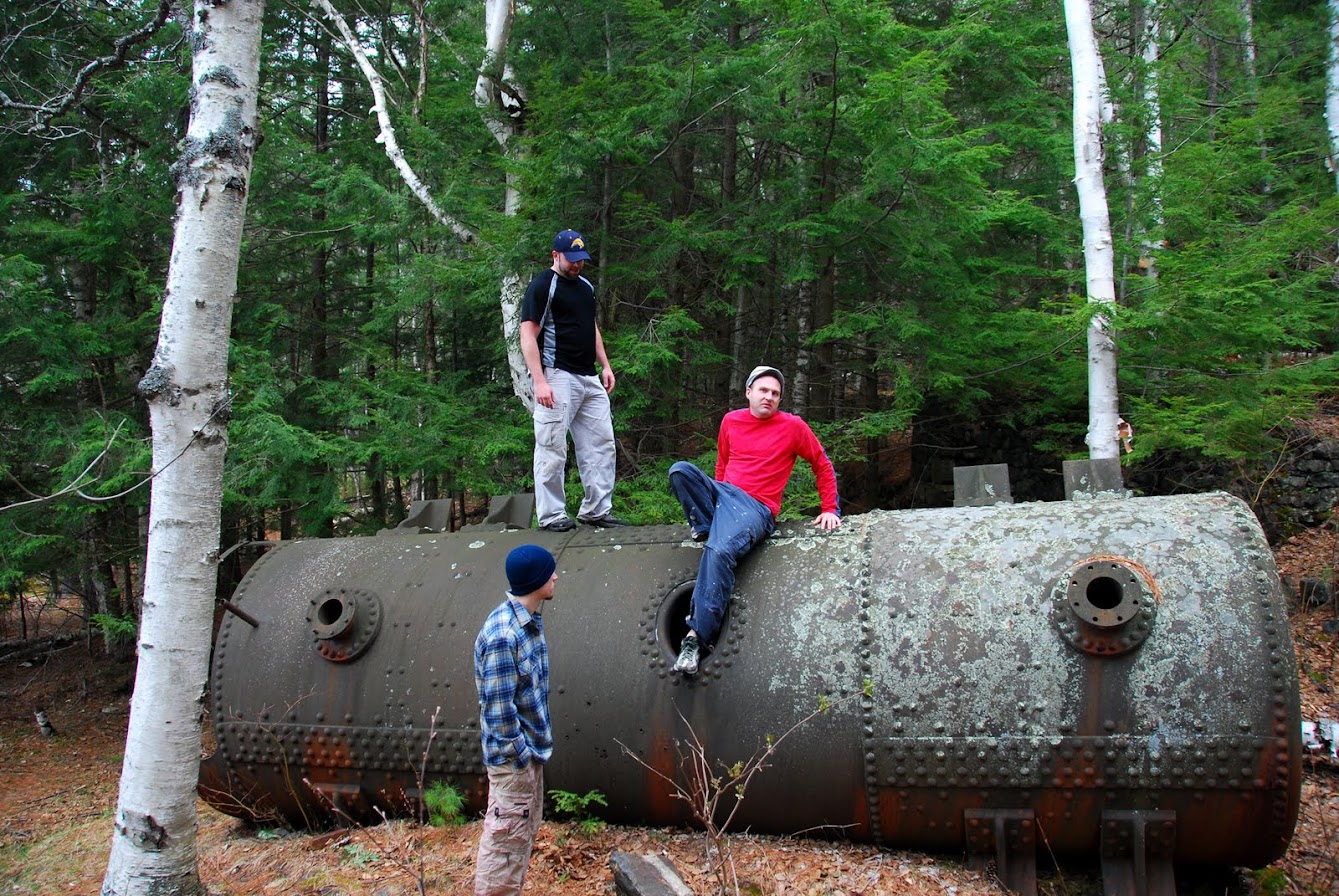
Here's some remnant of mechanized dunnowhat, left behind near whats left of the human bolstered dam on Clockmill Pond (ADK's). If anyone is curious, check it out on satellite images, it's got a very interesting shoreline.
For scale, the four sprig? post is about 8" in diameter.
Here's what's left of some sort of runabout, slowly dissolving in Jabe Pond.
Here's a little boiler, remnants of a graphite mining operation at Rock Pond (near Putnam, ADK's)
To the left in this picture you can see remnants of some red painted stick figures. There was even a few drops of the paint on the rocks on the floor which made it look so fresh, like it was recently made. These are dated to 3000 years old. To the right you can hint the carved silhouette of a moose and a bear. These are much bigger. About 6 feet across dated to be 9000 years old. This is above the arctic so if the datings are correct those carvings were put there just after the last ice age. There are reports of rock carvings resembling a mammuth and a bear, dated to 50-40.000 years old (that means before the last ice age!) but I haven't been able to find them yet.
It's a strange and fascinating sensation to stand before these depictions.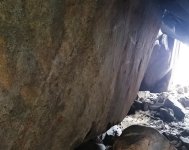
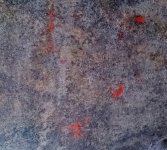
It's a strange and fascinating sensation to stand before these depictions.


Last edited:
Not every relic can be recovered.
We have indigenous grandchildren, one of whom is doing her masters degree in indigenous studies etc. She also researches treaties, early settler diaries, and geneology. All fascinating stuff to her old grandad, so I didn't miss the opportunity this morning over tea and toast to ply her with questions, one of which was "How is the detective work going regarding your own past?" She told me she is related to a current Algonquin chief, and that in itself was a difficult discovery vis a vis name changes (sometimes arbritary by colonial bureaucracy, eg. Sipise-kwe was changed to Savage), sometimes by marriage, adoption, etc, and then there's everyday life. It seems the Catholic mission was moving locations along the Mattawa river and the priest had loaded the canoes heavy with church archives. A capsize resulted in many precious documents lost to the river and time. However, enough scant pages survived for my g-daughter to piece together one slim branch of the family tree. Her search continues, and so too our leisurely chats about history, past and personal.
We have indigenous grandchildren, one of whom is doing her masters degree in indigenous studies etc. She also researches treaties, early settler diaries, and geneology. All fascinating stuff to her old grandad, so I didn't miss the opportunity this morning over tea and toast to ply her with questions, one of which was "How is the detective work going regarding your own past?" She told me she is related to a current Algonquin chief, and that in itself was a difficult discovery vis a vis name changes (sometimes arbritary by colonial bureaucracy, eg. Sipise-kwe was changed to Savage), sometimes by marriage, adoption, etc, and then there's everyday life. It seems the Catholic mission was moving locations along the Mattawa river and the priest had loaded the canoes heavy with church archives. A capsize resulted in many precious documents lost to the river and time. However, enough scant pages survived for my g-daughter to piece together one slim branch of the family tree. Her search continues, and so too our leisurely chats about history, past and personal.
Last edited:
I have worked for several environmental consulting companies over the years with PhD archeaologists on staff. Once in awhile I would get recruited to do some Class III arch surveys, mostly around old mining sites in Nevada. Pre-historic evidence includes pottery, projectile points, bifaces and reduction stations and fire cracked rock, a few stone foundatios. Historic sites are buildings, old mine equipment, placer mining evidence, and trash middens. There is a actually a typology for nearly all artifacts including trash piles. They can be dated by types of cans, solder seams, indentations in cans, the color of glass, etc. We actually found an old town site in northern Nevada called Rosebud that was near the Applegate/Lassen Trail. It was a mining camp that was rumored to exist but never located.
We could be hiking along a find a trash pile from an old sheep camp and date its occupation within 10 years in 15 minutes.
We could be hiking along a find a trash pile from an old sheep camp and date its occupation within 10 years in 15 minutes.
I have mentioned my old friend Al, RIP that was a forester from Wisconsin. He went on a long canoe trip in BWCA when it was just a National Forest in 1938. His outfitter was Sig Olsen. Al told the story of finding an old Voyager equipment cache on a island. It was old cookie tin with trade beads, fish hooks, red cloth, char cloth, flint, some gun powder, and other wampum. They looked at the contents and put it back. It is probably still there.
I have a box of old trade beads from the Pacific Northwest given to me by my grandfather. The date on the box is 1906. He claimed that they came from Ft Clatsop where Lewis and Clark spent the winter around 1804. The beads are correct for the time period.
I have a box of old trade beads from the Pacific Northwest given to me by my grandfather. The date on the box is 1906. He claimed that they came from Ft Clatsop where Lewis and Clark spent the winter around 1804. The beads are correct for the time period.
My favorite finds from the past are old cairns leading through areas with no other sign of humans having been there. When trappers started using snowmobiles they took to the frozen wet areas as they were easiest to use. Come canoe season paddlers followed their paths through some really nasty bogs and the high and dry portages were missed. I enjoy searching out these areas to find the old portages and clean them up.
Native American Indians did not permanently live in the Adirondacks, but different tribes did travel through the area as hunting grounds. The word "Adirondack" is a mispronounced derivation of the Iroquois word for "bark-eater." The "Ha-De-Ron-Dah" Wilderness area in the western Adirondacks is an attempt at a more accurate spelling of the original Native word. Another source claims the native word is "atirǫ́·taks", meaning tree or bark eater. It was supposedly a derogatory term from the Iroquois tribes as a name applied to more northern Algonquian tribes who sometimes relied on tree bark for sustenance during harsh winters. So the legend goes.
When I was instructor to certify a student group of adult (college age) BSA high adventure trek guide trainees in canoe tripping and camping for BSA National Camping School, I had them navigate from our canoes on a bushwhack exercise to the base of a steep cliff face that was comprised of huge broken blocks of granite, all randomly jumbled together, some leaving large room like openings in between. Somwhat tricky and dangerous to ankles to walk through. Called breakdown caves as opposed to solution caves common in limestone formations. I have found chunks of ice leftover in the caves from the winter, even into early July. In one of these "rooms", my students found what looked to be shards of broken clay pottery. Some had distinctive designs. In keeping with LNT principles in training, we did not disturb the shards from their original locations.
We later contacted the NYS museum in Albany, who sent out a crew to investigate and confirmed that it was real native pottery, likely surviving from possibly hundreds of years ago at least. The museum people photographed and collected samples to take back to the museum for further study. (I was told that they still document and archive using film cameras, in both color and B/W since no one knows the true lifetime of digital media records) The professionals verified they were real bits of pottery from pre-history. I have returned many times, but found no other artifacts in any of the other many rock cavities. Sorry I have no photos of the exciting find, partially to protect the exact location from further exploitation..
When I was instructor to certify a student group of adult (college age) BSA high adventure trek guide trainees in canoe tripping and camping for BSA National Camping School, I had them navigate from our canoes on a bushwhack exercise to the base of a steep cliff face that was comprised of huge broken blocks of granite, all randomly jumbled together, some leaving large room like openings in between. Somwhat tricky and dangerous to ankles to walk through. Called breakdown caves as opposed to solution caves common in limestone formations. I have found chunks of ice leftover in the caves from the winter, even into early July. In one of these "rooms", my students found what looked to be shards of broken clay pottery. Some had distinctive designs. In keeping with LNT principles in training, we did not disturb the shards from their original locations.
We later contacted the NYS museum in Albany, who sent out a crew to investigate and confirmed that it was real native pottery, likely surviving from possibly hundreds of years ago at least. The museum people photographed and collected samples to take back to the museum for further study. (I was told that they still document and archive using film cameras, in both color and B/W since no one knows the true lifetime of digital media records) The professionals verified they were real bits of pottery from pre-history. I have returned many times, but found no other artifacts in any of the other many rock cavities. Sorry I have no photos of the exciting find, partially to protect the exact location from further exploitation..
I’ve often wondered how long items need to be abandoned before they transition from garbage to artifact.
Case in point: at the base of an easily reached waterfall, often hidden in knee deep vegetation, is a former dump site. Old milk cans, broken bottles, etc. My best guess is that the items are from the 40’s and 50’s (20 century) that is.
If I stumbled on that stuff in the 60’s, instead of the late 80’s, would I have thought that stuff was cool? Or would I have just been disgusted?
Case in point: at the base of an easily reached waterfall, often hidden in knee deep vegetation, is a former dump site. Old milk cans, broken bottles, etc. My best guess is that the items are from the 40’s and 50’s (20 century) that is.
If I stumbled on that stuff in the 60’s, instead of the late 80’s, would I have thought that stuff was cool? Or would I have just been disgusted?
We stumble upon a lot of mine artifacts around here. Most recent for me is one I should have noticed years ago but spotted it from the water only last summer. Twisted remains of a mine cart track coming out of the mountainside where I had never hear of a mine being there. Thought I had a photo but can't find it now.
I found this unusual artifact while on the river yesterday.
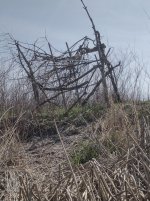
Poor guy must've been a lousy hunter.
I found this unusual artifact while on the river yesterday.

Poor guy must've been a lousy hunter.
I have known people who say they collect antique bottles and coins and other stuff of value from old abandoned home sites or long ago abandoned logging camps in the woods. The first place to go to find the best treasures is in the pit of old rotted outhouses.
Last edited:
By law, artifacts over 50 years old are included under the Antiquities Act.
One of the clues we looked for when seeking out old canoe routes in NW Ontario. Although these blazes are probably only 2-4 decades old (the trees they came from are about 70 years old) they marked historic canoe routes which were likely centuries old. These rounds were harvested from blown down trees found on the forest floor. And my trip mates insisted I hump them out with my personal gear.
Attachments
Similar threads
- Replies
- 4
- Views
- 1K
- Replies
- 7
- Views
- 4K
- Replies
- 13
- Views
- 4K
G
- Replies
- 0
- Views
- 980
G

